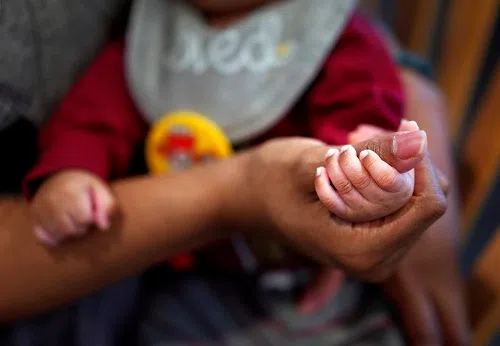ORANGE, Va. (AP) — There has been a nationwide expansion of maternity homes in the two years since the Supreme Court overturned Roe v. Wade and the federal right to abortion. Christian anti-abortion advocates want to open more of these transitional housing facilities for pregnant women to meet a growing need. It’s part of what they see as the next step in preventing abortions and providing long-term support for families. But maternity homes also have a traumatic history of coerced adoptions, particularly in the three decades before Roe v. Wade. Today’s activists and former residents of maternity homes are still grappling with that legacy.
Extended version:
ORANGE, Va. (AP) — On the wall of the maternity home is the motto: “Saving Babies, One Mom at a Time.”
For founders Randy and Evelyn James, the home started with one baby — their own.
Paul Stefan was the last of their six children, born with a fatal condition. They had not aborted the pregnancy as doctors advised. He lived just over 40 minutes, long enough to be baptized and named after their Catholic priest.
In the nearly two decades since, the Jameses have channeled their son’s memory and their anti-abortion beliefs into running maternity homes. Evelyn James said they knew they “were going to do something for women in crisis pregnancies.”
In August, their Paul Stefan Foundation plans to open a new floor with seven more rooms at their headquarters in a former hotel in Orange, Virginia.
Their momentum is part of a larger trend: There has been a nationwide expansion of maternity homes in the two years since the Supreme Court overturned Roe v. Wade and the federal right to abortion.
“It’s been a significant increase,” said Valerie Harkins, director of the Maternity Housing Coalition, an anti-abortion network of 195 maternity homes that has grown 23% since the court’s ruling.
There are now more than 450 maternity homes in the U.S., according to Harkins; many of them are faith-based. Anti-abortion advocates want to open more of these transitional housing facilities, believing they are the next step in helping women who carry pregnancies to term.
The reasons for the surge in interest in maternity homes are complex and go beyond abortion restrictions. Harkins said unaffordable housing, paychecks cut by inflation and higher birthrates in some states have all contributed.
“It created a perfect storm,” she said. “There’s quite a need.”









Comments